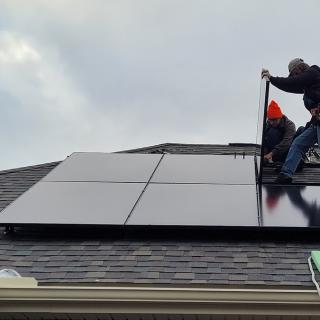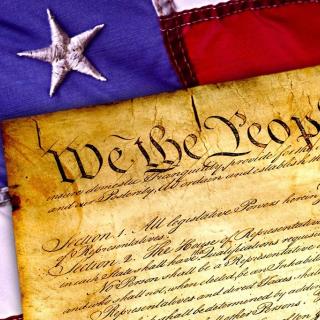Among his many actions on Monday in his first day as U.S. president, Donald Trump ordered a “temporary withdrawal” of any new federal leasing of the Outer Continental Shelf for new offshore wind projects.
As Reuters reported, Trump “suspended new federal offshore wind leasing pending an environmental and economic review, saying windmills are ugly, expensive and harm wildlife. ‘We're not going to do the wind thing. Big, ugly windmills. They ruin your neighborhood,’ he said. Without providing evidence, he said offshore wind projects were behind an increase in whale deaths off the U.S. East Coast in recent years.”
New York State and other states have embraced offshore wind. As its governor, Kathy Hochul, declared in her “State of the State” address a week earlier, “We recommitted to reducing carbon emissions with offshore wind off the coast of Long Island.”
A week before that, in a “State of the Region” speech on Long Island, Hochul told of how with “the South Fork Wind Project we have the largest commercial grade offshore wind facility in America. And we’re just getting started….Don’t stop believing that this is one of the many ways tat we can use our ingenuity and bring power to…Long Island.”
Hochul and many public officials in the U.S. and around the world strongly support offshore wind. In the United Kingdom, wind power has become its major source of electricity with 17.3% of its electricity from offshore wind, 11.4% from onshore wind.
“Wind is main source of UK electricity for the first time,” was the headline of a BBC News piece in 2023 by Esme Stallard, its climate and science reporter.
“Energy prices drop below zero in the UK thanks to record wind-generated electricity,” was the headline of an article last month on the website EcoWatch celebrating a one-day record. This piece said, “UK’s Labour government has a goal of quadrupling offshore wind power, doubling onshore wind and tripling solar by 2030, with an overall target of 95% green energy.”
The title of a current UK government posting: “The UK continues to drive investment and innovation in its thriving offshore wind.” It added, “The UK is the second largest offshore wind market in the world.”
Europe was decades ahead of the U.S. in building offshore wind farms. It looked to the sea for the placement of wind turbines because of a situation similar to that of U.S. coastal areas: hefty populations making onshore wind sites problematic, thus offshore wind desirable. Also, wind is stronger and more constant offshore than over land.
But the front page of the Long Island daily newspaper Newsday was plastered last week with the headline: “WIND POWER IN THE TRUMP ERA. President-elect has vowed to block turbine projects, creating new doubts over industry’s future.”
The two-page article, by Mark Harrington, who covers energy issues, reported that wind energy “is facing severe headwinds from Washington as a second Trump administration prepared for office, with potential ramifications for New York State and Long Island. Whether the anti-wind power rhetoric from President-elect Donald Trump is enough to stall projects already underway, or nix ones teed up for federal approval remains to be seen. New York and other states are already building projects and new ones could be announced as soon as this week. New York proposes getting all of its power from wind and other non-emission sources by 2040.”
The piece went on: “Trump, in a briefing from Mar-a-Lago in Florida last week, derided wind-energy turbines…while vowing to undo recently enacted oil and gas offshore drilling bans.” He “vowed to act quickly to stop future development. ‘We’re going to try to have a policy where no windmills are being built,’ he said, calling them an environmental ‘disaster’ that are ‘driving the whales crazy.’”
Three days after the Newsday story appeared, the Associated Press ran a story by Jennifer McDermott, a reporter on its Environment and Climate Team, that began: “President-elect Trump tasked a New Jersey congressman and vocal critic of offshore wind with writing an executive order he could issue to halt wind energy projects.” The congressman is Jeff Van Drew, a Cape May County Republican.
The Associated Press in a follow-up article on Monday said that Van Drew “quickly sent the draft” to “Trump’s pick for interior secretary, Doug Burgum.” The article went on that “Van Drew views the executive order as a first step toward an eventual moratorium on offshore wind development.”
Also Monday, the journal Offshore published a piece that said: “The move signals Trump’s intent to pivot energy policy toward fossil fuels like oil, natural gas and coal, a cornerstone of his campaign platform.”
The Conservation Law Foundation, based in Boston, points to a study by Brown University’s Climate and Development Lab that “reveals a network of bad actors behind offshore wind misinformation.” A piece on the foundation’s website says the report reveals “the well-organized effort to stop offshore wind development.” The “effort looks innocuous on the surface, led by groups with names like Green Oceans, Deep Sea Defenders, and Environmental Progress. But once you dig deeper, you find a complicated web of climate-denying organizations, dark money donors, and fossil fuel interests.”
It “has helped expose this hidden network. The report lays out the dizzying tangle of conservative think tanks, Koch-funded initiatives, and climate-denying nonprofits behind the many small community organizations that provide a public-friendly face to the movement to stop offshore wind development.”
The December 2023 report is titled “Against the Wind: A Map of the Anti-Offshore Wind Network in the Eastern United States.” Brown University, located in Rhode Island, says its report provides an “unparalleled window into how fossil fuel interests are working with climate denial think tanks and community groups to obstruct offshore wind projects.” Tracked, it says, is how “the anti-offshore wind movement” has “received donations from six fossil fuel-interested donors between 2017 and 2021. Of these donations, $16,278,401 has gone to members of a grassroots-appearing coalition.”
As to Trump’s claim about offshore wind and whales, Oscar Milman, environmental correspondent for the Guardian, wrote an article in 2023 headed “Trump falsely claims wind turbines lead to whale deaths by making them ‘batty.’” It related a campaign rally in South Carolina—off which wind projects are also underway—at which Trump “launched a lengthy and largely baseless attack on wind turbines for causing large numbers of whales to die, claiming that ‘windmills’ are making the cetaceans ‘crazy’ and ‘a little batty.’” The piece added how “Trump has a history of making false or exaggerated claims about renewable energy, previously asserting that the noise from wind turbines can cause cancer.”
BBC News as part of its “Verify” program published in 2023 a piece “fact-checking,” it said, Trump’s claim about whales at the rally and concluded: “There is no evidence to back Mr. Trump’s suggestion that offshore wind turbines are killing whales.”
The National Oceanic and Atmospheric Administration, a U.S. government agency, posted a lengthy essay online last year titled “Frequent Questions—Offshore Wind and Whales.” In response to the question: “Is U.S. offshore wind development linked to any whale deaths,” NOAA said: “There are no known links between large whale deaths and ongoing offshore wind activities.” It said: “Vessel strikes and entanglement in fishing fear are the greatest human threats to large whales.”
Trump has long opposed wind turbines, his opposition highlighted a decade ago by his unsuccessful fight against an 11-turbine wind farm off his Trump International Golf Links in Scotland.
South Fork Wind in describing its wind farm in the Atlantic 35 miles east of Montauk Point and “out of sight from Long Island beaches” says “South Fork Wind will be New York’s first offshore wind farm—a centerpiece of New York’s ambitious offshore wind energy goals. Its 12 turbines will produce enough clean, renewable energy every year to power 70,000 homes. From stronger coastal storms to sea level rise, the harmful effects of climate change are a stark reality on Long Island…” It began delivering electricity to Long Island last year.
The directive issued under the heading “The White House” on Monday was in the form of a “memorandum for the secretary of the treasury, the attorney general, the secretary of the interior, the secretary of agriculture, the secretary of energy, the administrator of the Environmental Protection Agency.”
It is titled “Temporary Withdrawal of All Areas on the Outer Continental Shelf from Offshore Wind Leasing and Review of the Federal Government’s Leasing and Permitting Practices for Wind Projects.”
It states: “Consistent with the principles of responsible public stewardship that are entrusted to this office, with due consideration for a variety of relevant factors, including the need to foster an energy economy capable of meeting the country’s growing demand for reliable energy, the importance of marine life, impacts on ocean currents and wind patterns, effects on energy costs for Americans–-especially those who can least afford it–-and to ensure that the United States is able to maintain a robust fishing industry for future generations and provide low cost energy to its citizens, I hereby direct as follows: Under the authority granted to me in section 12(a) of the Outer Continental Shelf Lands Act, 43 U.S.C. 1341(a), I hereby withdraw from disposition for wind energy leasing all areas within the Offshore Continental Shelf.”
It continues: “This withdrawal temporarily prevents consideration of any area in the OCS for any new or renewed wind energy leasing for the purposes of generation of electricity or any other such use derived from the use of wind.”
And it states: “Nothing in this withdrawal affects rights under existing leases in the withdrawn areas. With respect to such existing leases, the Secretary of the Interior, in consultation with the Attorney General as needed, shall conduct a comprehensive review of the ecological, economic, and environmental necessity of terminating or amending any existing wind energy leases, identifying any legal bases for such removal, and submit a report with recommendations to the President, through the Assistant to the President for Economic Policy.”



